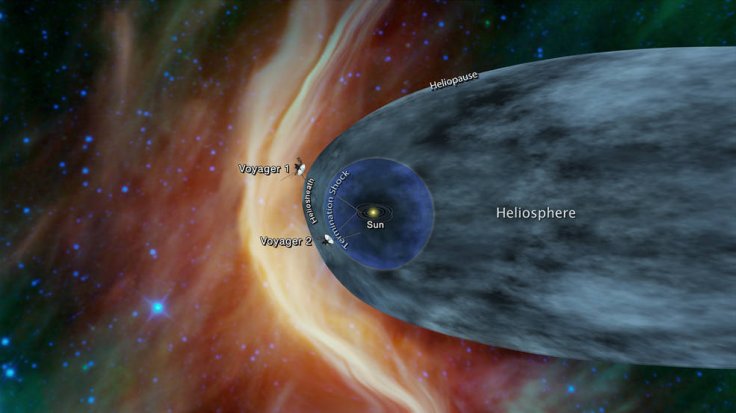
NASA's Voyager 2 probe, one of the fastest and farthest Earth-made objects ever launched is now currently nearing interstellar space, says the space agency. The spacecraft has detected a spike in cosmic rays that is believed to have originated outside the Solar System.
Voyager 2 was launched in 1977 and now is about 17.7 billion km from Earth. That is more than 118 times the distance from Earth to the Sun or 118 AU.
In 2007 the probe reached and started to travel through the outermost parts of the heliosphere—the "bubble of protection" that comes from the magnetic fields of the Sun and the planets in the Solar System.
Since then, for over a decade now, Voyager scientists were watching and waiting for it to reach the outer edges of the heliosphere—the heliopause. After Voyager 2 exits the heliosphere and into the heliopause, it will be the only second object that originated from Earth, after Voyager 1, to enter interstellar space.
Since August, the Cosmic Ray Subsystem (CRS) on Voyager 2 measured a roughly 5 percent increase in the rate of cosmic rays reaching the spacecraft as compared to early August. The spacecraft's Low-Energy Charged Particle (LECP) instrument also detected about 5 percent increase in higher-energy cosmic radiation, notes NASA.
Cosmic rays are explained as fast-moving particles that come from outside the Solar System. A good portion of these particles are blocked by the heliosphere, so the ground teams are expecting Voyager 2 to measure an increase in cosmic rays as it reaches and crosses the heliosphere.
Voyager 1 experienced a similar spike in cosmic rays in 2012, notes NASA. This was around the time that it exited the heliosphere—around three months before Voyager 1 crossed the heliopause and entered interstellar space.
"We're seeing a change in the environment around Voyager 2, there's no doubt about that," said Voyager Project Scientist Ed Stone, based at Caltech in Pasadena. "We're going to learn a lot in the coming months, but we still don't know when we'll reach the heliopause. We're not there yet—that's one thing I can say with confidence."









